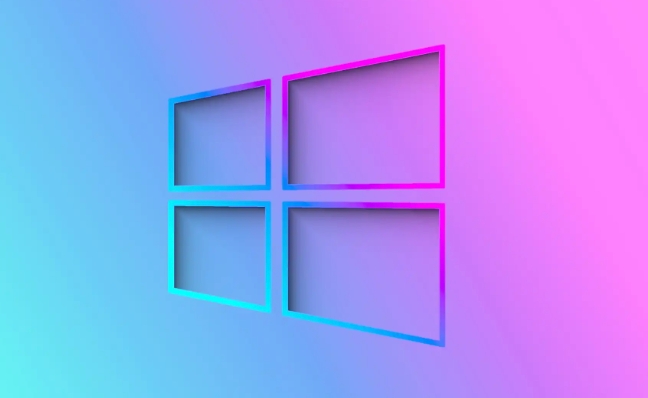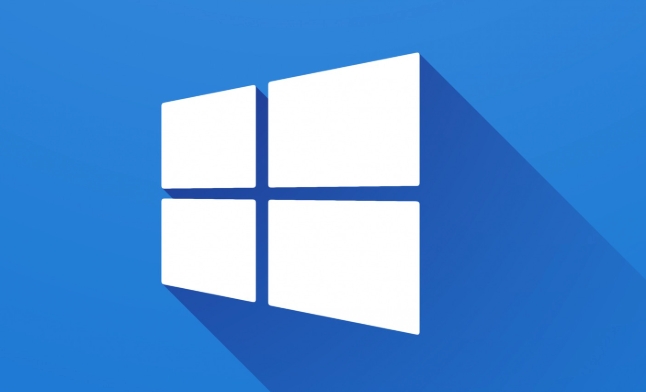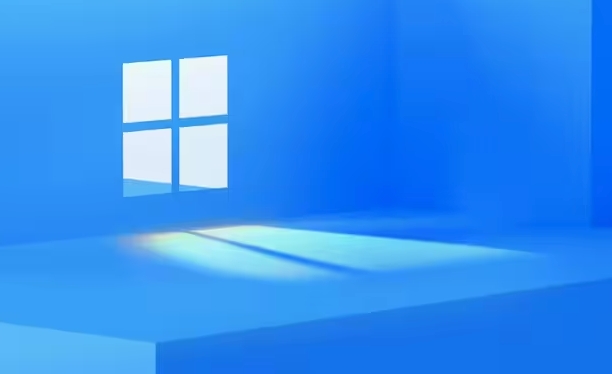How to install Windows from the network using PXE boot
Jul 30, 2025 am 01:41 AMTo boot Windows through the network using PXE, you must first prepare the DHCP server, TFTP server, PXE-supported network card, Windows installation files and deployment services; 1. Install WDS on Windows and configure the boot and installation images; 2. Install dnsmasq and tftpd-hpa on Linux and configure the DHCP and TFTP paths; 3. Mount ISO and copy the installation files to the server; 4. Ensure that the firewall is open and configured correctly; 5. Enable PXE boot on the client and select the installation option for installation.

Setting up a PXE boot environment to install Windows over the network is super handy if you're managing multiple machines or just want to avoid USB drives. It's not something most people do daily, but once it's set up, it saves time in the long run.

What You Need Before Starting
Before diving into the setup, make sure you have the right tools and components:

- A working DHCP server (can be your router or a separate machine)
- A TFTP server to serve the boot files
- A PXE-enabled NIC on the client machine
- Windows installation files (ISO or extracted sources)
- A server running something like Windows Deployment Services (WDS), or Linux with dnsmasq/tftpd setup
Also, keep in mind that your client machine must support PXE booting — almost all modern PCs do, but you might need to enable it in the BIOS/UEFI settings.
Setting Up the PXE Server
The easiest way to go about this depends on whether you're using Windows or Linux as your server.

On Windows , you can use WDS:
- Install the Windows Deployment Services role via Server Manager.
- Configure the server to respond to PXE requests.
- Import the boot image (use the
boot.wimfrom your Windows ISO). - Add an install image (the actual Windows OS files).
On Linux , you'll typically use a combo of dnsmasq or ISC DHCP tftpd-hpa:
- Install necessary packages (
dnsmasq,tftpd-hpa,syslinux). - Configure dnsmasq to handle DHCP and point to your TFTP server.
- Place the appropriate boot files (like
pxelinux.0,menu.c32) in the TFTP root. - Set up a menu configuration so users can pick which OS to install.
Make sure your firewall allows UDP ports 67 (DHCP) and 69 (TFTP). Also, check that the TFTP server path is correct and accessible.
Preparing the Windows Installation Files
Once your PXE server is ready, the next step is preparing the actual Windows install files.
If you're using WDS, just import the ISO directly through the GUI. On Linux, you'll need to manually extract the contents of the Windows ISO, especially the sources/install.wim .
You may also want to create a custom boot image with drivers or scripts added, but that's optional unless you're deploying to specific hardware.
Here's what you usually do:
- Mount the Windows ISO.
- Copy the contents to a folder on your server.
- Make sure the boot image (
boot.wim) is placed where the PXE server expects it. - Link the install image in your PXE config so it boots properly.
Some setups require converting install.wim to install.esd for size reasons, but that's more advanced.
Booting the Client and Installing Windows
Now that everything's set up, it's time to test it out.
- Start the client machine and enter BIOS/UEFI settings.
- Enable network/PXE boot and move it to the top of the boot order.
- Save and exit — the machine should start loading the PXE boot files.
- Once the boot menu appears, select the Windows install option.
- Follow the standard Windows installer steps.
A few gotchas to watch for:
- The client must be on the same network segment as the PXE server.
- Some UEFI systems may require Secure Boot to be disabled or set to "other OS" mode.
- If you see timeouts or no boot menu, double-check your DHCP and TFTP logs.
If everything goes smoothly, you'll be installing Windows without touching a USB stick.
Basically that's it.
The above is the detailed content of How to install Windows from the network using PXE boot. For more information, please follow other related articles on the PHP Chinese website!

Hot AI Tools

Undress AI Tool
Undress images for free

Undresser.AI Undress
AI-powered app for creating realistic nude photos

AI Clothes Remover
Online AI tool for removing clothes from photos.

Clothoff.io
AI clothes remover

Video Face Swap
Swap faces in any video effortlessly with our completely free AI face swap tool!

Hot Article

Hot Tools

Notepad++7.3.1
Easy-to-use and free code editor

SublimeText3 Chinese version
Chinese version, very easy to use

Zend Studio 13.0.1
Powerful PHP integrated development environment

Dreamweaver CS6
Visual web development tools

SublimeText3 Mac version
God-level code editing software (SublimeText3)

Hot Topics
 What is the difference between macOS Recovery and Internet Recovery?
Jul 02, 2025 am 12:24 AM
What is the difference between macOS Recovery and Internet Recovery?
Jul 02, 2025 am 12:24 AM
macOSRecoveryisabuilt-inrecoverysystemonahiddenpartitionofyourMac’sstartupdisk,providingtoolslikeDiskUtility,Terminal,andmacOSreinstallation.1.Itloadsquicklyfromlocalstorage.2.Requiresafunctioninginternaldrive.3.ToolsincludereinstallingmacOS,repairin
 How to dual boot Windows 11 and Ubuntu
Jul 01, 2025 am 12:08 AM
How to dual boot Windows 11 and Ubuntu
Jul 01, 2025 am 12:08 AM
When installing dual systems, you need to pay attention to partitioning, installation order and BIOS settings. 1. Partition preparation: Use disk management tools to compress at least 25GB (50GB or more) of unallocated space to Ubuntu without formatting; 2. Make a boot U disk: Use Rufus to write Ubuntu ISO to at least 8GB U disk; 3. BIOS settings: Restart and enter the BIOS (usually press F2, Del or Esc), turn off SecureBoot, and set the U disk as the first boot item; 4. Install Ubuntu: Select "Somethingelse" custom partition, create a new ext4 mount point/ and occupy the remaining space, and build a swap partition equal to the memory size, boot and add
 Minimum system requirements for Windows 11
Jul 03, 2025 am 12:48 AM
Minimum system requirements for Windows 11
Jul 03, 2025 am 12:48 AM
The minimum hardware requirements of Windows 11 mainly include five aspects: 1. The processor must be from the sixth-generation Intel or Ryzen starting point or above, supports 64-bit, dual-core and above, the main frequency is not less than 1GHz, and is on the Microsoft support list; 2. At least 4GB of memory, but 8GB or higher is recommended to ensure smooth use; 3. At least 64GB of storage space, the system itself occupies about 25~30GB, and it is recommended to use SSD; 4. The TPM2.0 security module must be supported and enabled, many motherboards did not meet this condition before 2016; 5. Some users try to bypass the restricted installation may cause driver or update problems, and ordinary users do not recommend this.
 Can I use my Windows 7 product key to activate a new Windows 10 installation
Jul 02, 2025 am 12:15 AM
Can I use my Windows 7 product key to activate a new Windows 10 installation
Jul 02, 2025 am 12:15 AM
No,youcannotdirectlyuseaWindows7productkeytoactivateWindows10.1.Windowsproductkeysareversion-specific,soaWindows7keyonlyworksforWindows7.2.IfyourPCwasupgradedfromWindows7toWindows10beforesupportended,itmayhaveadigitallicenselinkedtothehardware,allowi
 This copy of the Install macOS application is damaged
Jul 06, 2025 am 12:26 AM
This copy of the Install macOS application is damaged
Jul 06, 2025 am 12:26 AM
The "InstallmacOS is corrupted" prompt is usually caused by security mechanisms rather than file corruption. Common reasons include unofficial download sources, incomplete files, failure to verify signatures in the old system, or misjudgment of Gatekeeper; solutions include: 1. Forced opening of the installer through terminal commands and starting the USB flash drive; 2. Temporarily closing Gatekeeper verification; 3. Remount the installer and delete kernelcache file repair permissions; ways to avoid problems include prioritizing the use of official channels to download, verify the SHA256 value, selecting a trusted third-party site, and avoiding modification of the installation content.
 How to convert MBR to GPT for Windows 11 installation
Jul 05, 2025 am 12:39 AM
How to convert MBR to GPT for Windows 11 installation
Jul 05, 2025 am 12:39 AM
To convert the hard disk from MBR to GPT to install Windows 11, you must first back up the data and confirm that the motherboard supports UEFI; 1. Automatic conversion using Windows installation media: Insert the USB disk and boot from USB, press Shift F10 on the installation interface to open the command prompt, enter diskpart, listdisk, selectdiskX, clean, convertgpt commands to complete the conversion. This method will clear all contents of the disk; 2. Lossless conversion of non-system disks in existing Windows: Use AOMEIPartitionAssistantStandard and other tools to right-click to convert to GPT disk. It is still recommended to backup data before operation;
 Windows 10 installation stuck on logo
Jul 06, 2025 am 12:01 AM
Windows 10 installation stuck on logo
Jul 06, 2025 am 12:01 AM
When booting the computer and logging in the Windows 10Logo interface is usually not damaged by hardware, but rather an error in system file loading. 1. Wait for 15 to 30 minutes first to confirm whether it is "fake death". If there is no progress, force restart; 2. Force shut down three times to enter the recovery environment, try to start repair or enter safe mode to troubleshoot driver and software conflicts; 3. Check the hard disk bad channel, clean the memory gold fingers and replace the slot to test the hardware problems; 4. Finally, you can try to reset the computer or install the system in a brand new way to solve it, and give priority to using the official website pure ISO mirror.
 How to back up my Mac before a macOS update?
Jul 15, 2025 am 12:33 AM
How to back up my Mac before a macOS update?
Jul 15, 2025 am 12:33 AM
Before updating macOS, you should back up your Mac. 1. Use TimeMachine to make a complete backup, insert the external hard disk and enable automatic regular backup; 2. Manually back up important files to cloud storage or external devices, and give priority to backing up documents, photos, bookmarks and other key information; 3. Create a bootable macOS installation disk for system repair or reinstallation, prepare a 16GB USB disk and run terminal commands to create. Backup can effectively prevent update failure or data loss, and it is more secure to prepare in advance.






